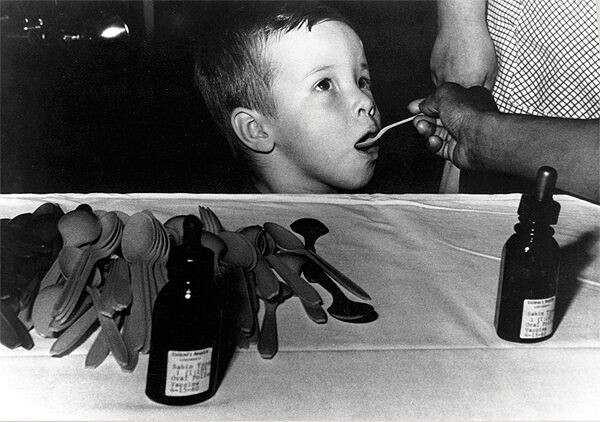
New York Times: What to expect when a coronavirus vaccine arrives
Audiences are reliving contributions by UC's Albert Sabin as part of historical vaccine talk
An article in today’s New York Times discusses the contributions of UC’s famed doctor Albert Sabin, who developed the live oral polio vaccine.
In 1958, “the federal government approved an oral polio vaccine, developed by Sabin’s laboratory in Cincinnati, containing weakened, not inactivated, virus,” states the article. “By the end of that year, polio infections were down 90 percent from 1955 levels. In 1979, the country recorded its last community-transmitted case.
"Today, decades into a global vaccination campaign, polio persists in just three countries. The battle against the disease has been a century-long march. And it has required a sustained commitment to continuing polio vaccination — a commitment now compromised as global polio vaccination efforts have been put on hold to slow the coronavirus’s spread."
Impact Lives Here
The University of Cincinnati is leading public urban universities into a new era of innovation and impact. Our faculty, staff and students are saving lives, changing outcomes and bending the future in our city's direction. Next Lives Here.
Stay up on all UC's COVID-19 stories, read more #UCtheGood content, or take a UC virtual visit and begin picturing yourself at an institution that inspires incredible stories.
Related Stories
News Cincinnati loved in 2025
January 2, 2026
The story of prohibition bootlegger George Remus was among WLWT's favorite segments in 2025. UC Law Professor Christopher Bryant spoke with journalist Lindsay Stone about Remus using a temporary insanity defense during a murder trial.
What to know about this year’s big tax changes
January 2, 2026
Local 12 reported that taxpayers can expect some major changes this tax season. Gary Friedhoff, adjunct instructor at the University of Cincinnati’s Carl H. Lindner College of Business, recently spoke to Local 12 about how to avoid surprises.
Study finds police officers face higher long-term health risks
January 2, 2026
J.C. Barnes, a University of Cincinnati professor, is interviewed by Spectrum News about new research showing that the physical and psychological demands of law enforcement can contribute to earlier deaths.
